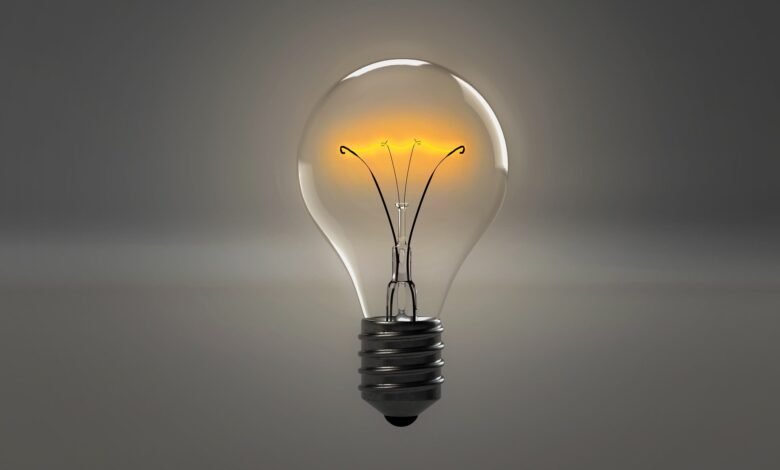The Incandescent Light Bulb: A Classic That Lit Up the World

For over a century, the incandescent light bulb has been a symbol of innovation, simplicity, and warm lighting. While new technologies like LEDs and CFLs have taken over the spotlight in recent years, the humble incandescent bulb holds a special place in the history of lighting. In this article, we’ll explore what makes an incandescent light bulb unique, how it works, and why it’s still relevant in certain settings today.
What Is an Incandescent Light Bulb?
An incandescent light bulb is one of the oldest and simplest forms of electric lighting. At its core, it consists of a glass enclosure (called a bulb) that houses a thin wire filament, typically made of tungsten. When an electric current passes through this filament, it heats up to a high temperature, causing it to glow and emit visible light.
This type of bulb operates on a basic but reliable principle: heat something enough, and it will start to glow. It’s a straightforward process that doesn’t involve any complex electronics, making it both easy to produce and simple to use. The soft, warm glow produced by incandescent bulbs is often described as more natural and pleasing to the eye compared to other types of artificial lighting.
Despite being one of the earliest forms of electric lighting, incandescent bulbs were considered a revolutionary invention in their time. They were affordable, widely available, and could be used practically anywhere, from homes and offices to streetlights and automobiles.
How Does an Incandescent Light Bulb Work?
The working mechanism of an incandescent bulb might seem almost magical, but it’s grounded in basic physics. When you flip the light switch, electrical current flows through the metal filament inside the bulb. As the current moves through the filament, it encounters resistance, which causes the filament to heat up to temperatures of around 2,000 to 3,000 degrees Celsius (3,600 to 5,400 degrees Fahrenheit).
At such extreme temperatures, the filament begins to emit light through a process called incandescence, hence the name “incandescent light bulb.” The filament is enclosed in a glass bulb filled with an inert gas like argon or nitrogen, which prevents the filament from oxidizing and burning out too quickly.
Interestingly, only about 10% of the energy consumed by an incandescent bulb is converted into visible light. The remaining 90% is lost as heat, which is one of the main reasons why these bulbs are considered less energy-efficient compared to modern lighting technologies like LEDs and CFLs.
The History and Legacy of the Incandescent Bulb
The story of the incandescent light bulb is often attributed to Thomas Edison, who is credited with creating the first practical and commercially viable version in 1879. However, it’s worth noting that several inventors, including Sir Humphry Davy and Joseph Swan, made important contributions to electric lighting before Edison’s breakthrough.
What set Edison apart was his ability to create a durable, long-lasting filament and an effective vacuum-sealed bulb, paired with a complete electrical distribution system to support widespread use. This innovation changed the way people lived, worked, and interacted with their surroundings, ushering in a new era of modern life.
Even though technology has advanced dramatically since Edison’s time, the incandescent bulb remains an iconic invention. Its simple design, warm glow, and cultural significance make it a nostalgic favorite in certain applications, including vintage fixtures, decorative lighting, and specialty uses.
Advantages and Disadvantages of Incandescent Bulbs
Like any technology, incandescent light bulbs come with their own set of pros and cons. On the positive side, they produce a warm, natural light that’s easy on the eyes and flattering for skin tones. They’re also incredibly easy to use — just screw them into a compatible fixture, and you’re good to go. Additionally, incandescent bulbs are often inexpensive to purchase upfront, making them an accessible option for many households.
On the downside, incandescent bulbs are notorious for their low energy efficiency. A significant portion of the electricity they use is lost as heat rather than converted into light. This inefficiency leads to higher electricity bills and increased environmental impact. They also have a relatively short lifespan, typically lasting around 750 to 2,000 hours, compared to the 15,000 to 25,000 hours you might get from an LED bulb.
Because of these limitations, many countries have implemented regulations to phase out standard incandescent bulbs in favor of more energy-efficient alternatives. However, they’re still available for certain specialty uses and in markets where restrictions are less strict.
Are Incandescent Bulbs Still Relevant Today?
With the rise of LEDs, CFLs, and halogen bulbs, you might wonder if there’s still a place for incandescent bulbs in today’s world. The truth is, while their use has decreased, they haven’t disappeared entirely. Many people still prefer the familiar, warm glow of an incandescent bulb for certain environments, such as bedrooms, dining areas, or decorative fixtures.
Incandescent bulbs also shine (pun intended) in situations where color accuracy and dimmability are essential. Unlike some modern bulbs, incandescent lights offer excellent color rendering and smooth, flicker-free dimming without the need for specialized dimmer switches. That makes them ideal for photography studios, art galleries, and theatrical productions.
Moreover, there’s a growing market for vintage-style incandescent bulbs, also known as Edison bulbs, which feature exposed filaments and a retro aesthetic. These bulbs are popular in cafes, restaurants, and homes aiming for an industrial or rustic look.
Final Thoughts
The incandescent light bulb may no longer be the king of household lighting, but its legacy is undeniable. It paved the way for the modern electrical age and set the standard for how we think about artificial lighting. While newer, energy-efficient technologies have taken over most applications, the incandescent bulb’s warm glow, simplicity, and historical importance ensure it will always have a special place in the world of lighting.
Whether you’re using one in a vintage lamp, a decorative fixture, or simply out of personal preference, you’re part of a long tradition of innovation and light. And sometimes, there’s just no substitute for that classic, cozy glow.



